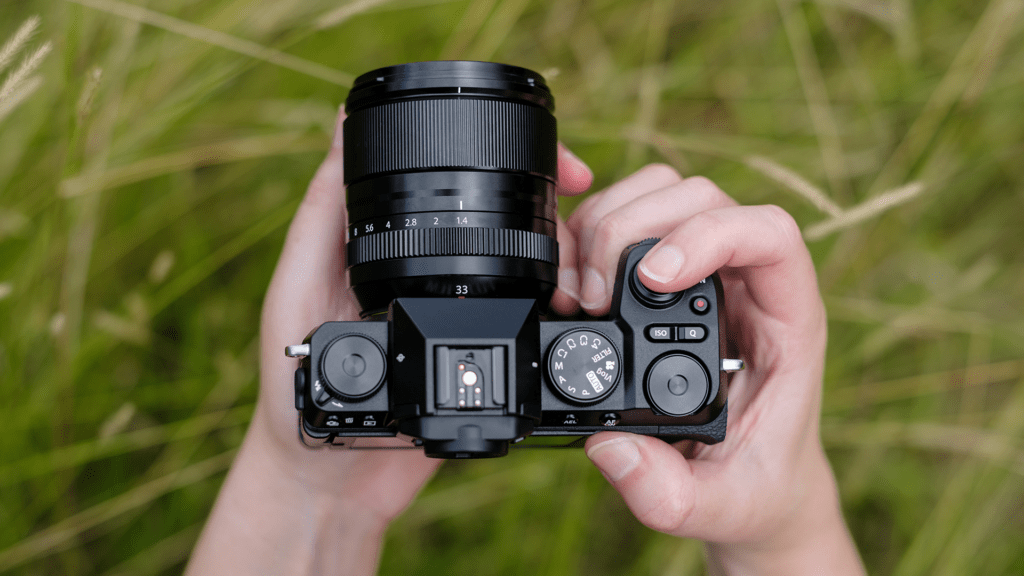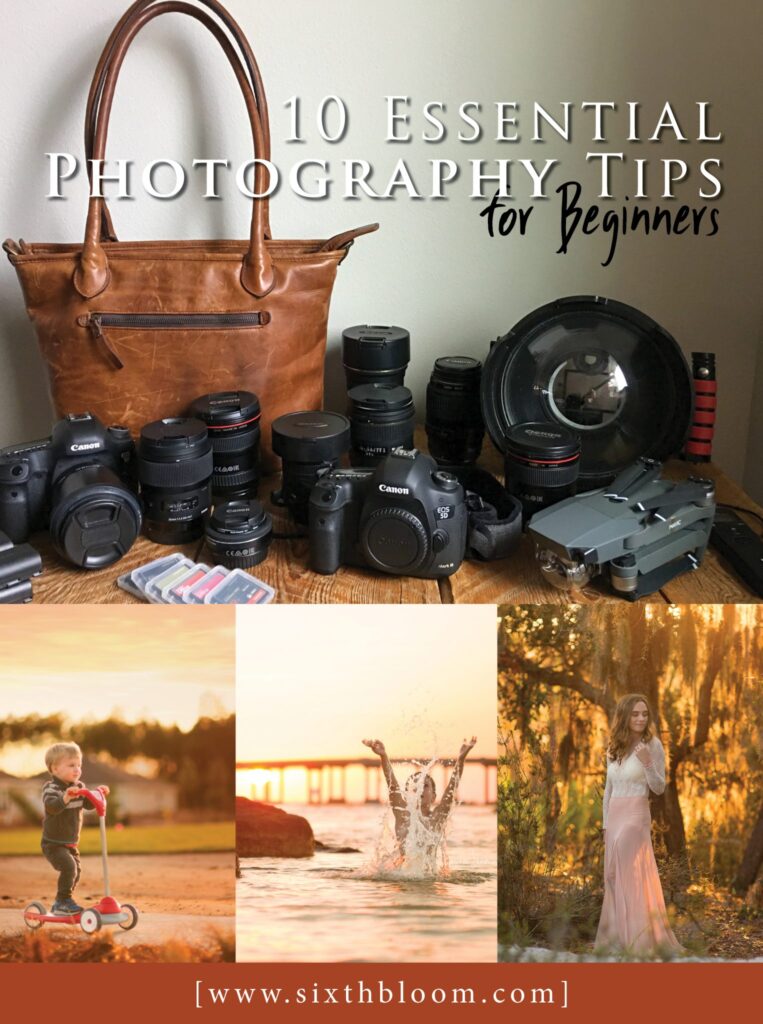Photography is currently the most happening choice of profession and many individuals take photos because they simply like it. Here are some crucial steps for the newbies.

Every photographer has a different vision and taste of capturing photos. However, it requires years of experience and knowledge to become a pro in the field who has individuality and a unique vision to stand out. It does not happen overnight but is gradually acquired with consistency. So, every photographer is a beginner someday and if it is just the beginning of your photography journey, stay put and learn the basic tips that can help you in the process.
There are many avenues of technicality and creativity regarding photography that help to turn something common into a unique masterpiece. In modern days, almost every other person has a digital camera, and if you want to stand out among them, here are the top 10 photography tips for beginners.
- Work with the composition
To capture engaging photos, you need to be engaged with your vision of what you are doing. Modern-day digital cameras are comprised of a lot of features and first comes understanding the basic elements. The advanced DSLRs will let you do a lot of stuff on auto-mode but it is more recommended to utilize manual options which lets you create the exact composition you have been looking for. To compose good photos, you need to keep the important parts of your subject with the edge of your frame without cutting it off. You must keep the level of the horizon and try to get rid of any distractions that disrupt the composition. There should be a sense of balance and simplicity. You can also experiment with alternative compositions to check which one suits the frame the most based on your creative vision.
- Use only the camera you have
Expensive cameras and tools are not as important as it is about the person behind the lens. If you visit the market, there are countless lenses, cameras, gimbal, and many other accessories available that can be easily purchased. However, it will only increase your expenses and create a burden on your head. It is true that there is no alternative to good gear that acts like your partner on the journey of Photography. However, if you lack the vision; no tool can bring out that in you. Instead of trying different cameras; utilize the camera you already have. The current market situation shows that entry-level mirrorless cameras are better than the top-of-the-line film SLRs or even the DSLRs. However, what is more important is to cultivate your passion with knowledge. Focus on your efforts and photography skills, not on the camera equipment.
- Learn the settings that matter
As mentioned before, there are a lot of features and settings in a camera and it can appear a little overwhelming in the beginning. Learn them and practice them to get it right. Before you dive into the complex settings, start studying the functions of exposure, aperture, shutter speed, and ISO which are the main ingredients to play with. Adjusting these elements creates a new tone or mood for the photo which is perhaps more artistic than what you are seeing. Even in changes in locations, time, and light; you can utilize these elements to get the perfect picture. Though it is important to master your photography skills manual, you should also learn to take pictures in various auto-focus modes which can become very handy for capturing things in motion.
- Don’t overexpose highlights
It might be a little daunting but also important not to overexpose the highlights which ruins the quality and composition of the picture. It is simply impossible to recover any detail from white areas of a photo and so, it should be carefully handled. In order to keep the highlights intact without over-exposing them, you need to adjust shutter speed, aperture, and ISO which directly affects the brightness of a photo. If you notice overexposed areas on your camera screen, you need to lower your ISO and utilize a faster shutter speed. In case you have a mirrorless camera, there should be features for a histogram or zebras. Enable them and you will be able to get a properly-exposed photograph.
- Have a good understanding of light
The most important element of photography is light and it should be handled carefully. However, good light is not about sunsets and blazing daylight. The key here is to keep a balance of light intensity between the subject and its background. The best way to fix that is to focus on the direction and softness of light. If the light is too harsh or too less; it can ruin the photo and your frame. That is why you need to occasionally adjust the source of light or position of the object to set a perfect ambiance.

- Be in the moment, take your time
It is quite easy to make mistakes when you are not careful. That is why, you need to take your time and be in the moment instead of rushing the process. Slow down and double-check your camera settings before you go out. Whether you click photos in the dark time or in the daylight; the setting must be adjusted in every case or else you will never get the image you are looking for. If you are into street photography, you might not get enough time to change the setting every time. So, fix it beforehand which can help you save time and get the exact image you wanted to capture.
- Keep Moving
If you are not into wildlife photography, there is no point in waiting at a single spot with your tripod being set. Keep moving around, take photos from different angles, walk forward and backward, and try taking pictures from different heights and angles. These are some common practices that can help you get the best possible frame. Being stagnant in a place is not a good sign for a photographer as you might miss out on other valuable frames. Always be on the move and experiment with your perspective. You never know, what might come out of it. Wildlife photographers on the other hand have to stay in one place and wait for an indefinite period of time to get the right shot.
- Learn the usage of a tripod
Tripods are definitely one of the greatest inventions in photography as it has eliminated one of the most crucial problems of lack of light. Tripods help to shoot multi-minute exposures that capture every detail of a photo regardless of the light. It easily captures the dark areas adjusted with ample light. As a result, the photos taken with a tripod are often sharper and consist of more clarity. Usually, when a photographer uses a tripod, the subject is mostly static or stationary. That is why, a tripod can be very helpful for landscape photographers, architectural photographers, and still-life photographers.
Macro photography is another vast area where tripods play a vital role. At high magnifications, it requires excellent in-body image stabilization (IBIS) to get excellent macro work. It helps to get the plane of focus right, even if you are using a flash. While tripods are so good, they can also slow you down and sometimes it is better if you just click on the go instead of standing in a single spot and fixing your tripod which takes a lot of time. Be wise and take tripods based on what kind of photos you are willing to take.
- The edges of your composition
The composition of a photo is not only about the subject but also the edges of the composition that offer a feel to your photos as if they are telling a story. Make sure to leave ample breathing room for the subject which makes the composition better. If you are subject is bunching up against the edge, perhaps it is not a good photo and unable to convey a story. Just like you want people to focus on the subject, you as a photographer need to focus on the edges that add depth and embrace your subject. If you just focus on the subject and do not pay attention to the edges, it is going to be another sloppy composition.
- Learn how to use flash
Flashes are created for more light, not exactly for the darkness. Even in the daytime, you can feel the need for more light and an external flash is the best way to do it. It is also known as ‘fill flash’ as it can fill the ugly dark patches in the photo with a gentle flash. The in-built flash in your camera can prove to be highly effective on a bright sunny day.
Final Thoughts
Photography is a fun hobby and helps to churn out creativity from every individual. Do not just consider it as a career choice but more like a passion that drives you crazy. Follow the aforementioned tips to brush up on your skills and become the photographer who wants to take pictures, not has to.

































